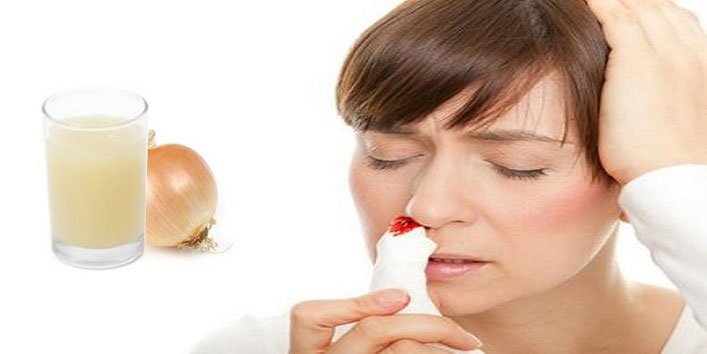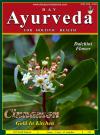The nose is the complex structure of human body. It is very vital as it performs the important functions. It is a part of respiratory system to inhale oxygen and exhale carbon dioxide. It purifies, and humidifies the inhaled air. It is also the first line of defense against the unwanted foreign particles. The nose is also responsible for sense of small and smell is associated with appetite so any type of change in sense of smell can alter appetite. It also plays a major role in keeping our hearing normal by providing ventilation to the middle part of ear through a tube. Since the nose is performing so many functions, it may get hurt sometimes if the conditions are not favourable. In summers, there is a very common complaint of nose bleed which causes a significant amount of concern and anguish. It is medically called epistaxis. It has bimodal distribution with incidence peaks at ages younger than 10 years and older than 50 years. It appears to occur more in males than females.
The nose is the complex structure of human body. It is very vital as it performs the important functions. It is a part of respiratory system to inhale oxygen and exhale carbon dioxide. It purifies, and humidifies the inhaled air. It is also the first line of defense against the unwanted foreign particles. The nose is also responsible for sense of small and smell is associated with appetite so any type of change in sense of smell can alter appetite. It also plays a major role in keeping our hearing normal by providing ventilation to the middle part of ear through a tube.
Since the nose is performing so many functions, it may get hurt sometimes if the conditions are not favourable. In summers, there is a very common complaint of nose bleed which causes a significant amount of concern and anguish. It is medically called epistaxis. It has bimodal distribution with incidence peaks at ages younger than 10 years and older than 50 years. It appears to occur more in males than females.
Common Reasons of Nose Bleeding
There are many reasons of nose bleed and should be ruled out. But most nosebleeds are of no serious consequence. Generally trauma to the nose, nasal infections, fevers, nasal allergy, bleeding disorders, tumours, over use of nasal decongestants are causative factors. Certain atmospheric changes are also responsible for it. Hardening of vessels is also an important factor for nose bleeding in elderly people. People must be aware of the medicines they are taking as some drugs may hinder clotting of blood and injudicious use of heaters in winters and airconditioners in summers are also responsible.
Sites of Nose Bleeding
Depending on the site of bleeding, epistaxis (Nose bleed) is divided into anterior and posterior. The anterior is more common accounting for more than 90% of all nose bleeds. It happens in anterior nasal cavities from small blood vessels. They are easy to control. On the other hand, posterior one is known to be less common and more likely to occur in elderly people. The bleeding will originate from the big blood vessels, present in the back of nose. Sometimes this type of bleeding requires hospitalization.
Bleeding from the nose occurs in summers as well as in winters due to extreme temperatures. The hot air, cool air and dry air cause injury to the soft structures of the nose. The inside of the nose is lined with a mucous membrane that secretes mucous and protects the nose from drying out. These membranes are very rich in capillaries and are susceptible to bleeding from slightest injury that may be climatic or traumatic. When humidity is low in air, this mucous membrane dries out and cracks and bleeds. Some people have naturally a thin membrane in nose and so they suffer from frequent nose bleeding and this becomes the routine if the person doesn’t take care of it. The blood coming from the nose can be continuous stream or a small trickle.
As the season will take its own time, certain precautions if taken timely can prevent this troublesome condition in one’s life.
If the above preventive measures and treatment options are adopted, they are surely helpful for the ones who frequently suffer from this ailment. Rarely, if besides taking all measures, bleeding doesn’t stop, do consult a doctor and get the treatment.
Do and Don’t
1. Do not go out in hot weather.
2. Cover your head and nose with wet cotton cloth to avoid hot air coming inside the nose. Use good air humidifier.
3. Avoid picking and blowing the nose if there is dry mucous struck inside.
4. After the bleeding stops, the blood clots inside the nose. Don’t remove those clots.
5. Sit down and lean slightly forward so that blood will drain out instead of going down the back of the throat. If the person leans back, he may swallow the blood which can cause nausea, vomiting and diarrhoea.
6. Apply cold compresses or ice cubes across the bridge of the nose.
7. Pinch the soft part of the nose firmly for 10 minutes without releasing and breathe through the mouth. After 10 minutes, release the pressure from nose slowly and check the bleeding. If bleeding has not stopped, apply the pressure for another 10 minutes.
8. Consume coconut water, butter milk, plenty of water and stay hydrated.
9. Soak 2-3 figs in water every night and eat them next morning with water.
Ayurvedic Management
1. Kharjure, draksha, parushak, madhook are boiled in a water and the water is allowed to cool. Add sugar to it and administer to the patient.
2. Laja (Fried paddy) powder with honey and ghee is to be taken by the patient. It can be taken with amla and anaar.
3. Powder of ushira, lodhra, priyangoo, shankh, gairik, chandan are given to the patient along with rice water and sugar.
4. Powder of laksh, nagkeshar, gairik, mochras, rakta chandan orally with ghee.
5. Powdered mukta (pearls) & shankh with sugarcane juice.
6. Powder of haritki, vasa, mustka, mulethi, lodhra with vasa patra swaras.
7. Certain medicated ghees like vasaghrit and palash ghrit are beneficial in chronic cases.
8. Linctus made from, vasa, patha, ela are also prescribed.
Local Management
1. Local application of cow ghee, goat ghee, til taila.
2. Instillation of fresh juices of doorva, anaar pushpa, yavasa mool, lemon & vasa patra in the nose.
3. Dusting or sprinkling over eroded lining with powders of rakta chandan, lodhra, haldi, saphutika, onion give marvellous results.







 Dec 2024
Dec 2024
 May 2024
May 2024
 September 2022
September 2022
 April 2022
April 2022
 October 2020
October 2020
 Jan 2020
Jan 2020
 June 2019
June 2019
 January-February 2019
January-February 2019
 Augest-September
Augest-September
 April 2018
April 2018
 November 2017
November 2017
 June 2017
June 2017
 November 2016
November 2016
 September 2015
September 2015
 March 2015
March 2015
 July 2014
July 2014
 January 2014
January 2014
 July2013
July2013
 March 2013
March 2013
 May 2012
May 2012
 May 2011
May 2011
 Sep 2010
Sep 2010
 Jun 2010
Jun 2010
 Feb 2010
Feb 2010
 December 2009
December 2009
 August 2009
August 2009
 June 2009
June 2009
 Feb 2009
Feb 2009
 December 2008
December 2008
 October 2008
October 2008
 March 2008
March 2008
 July 2008
July 2008
 May 2008
May 2008